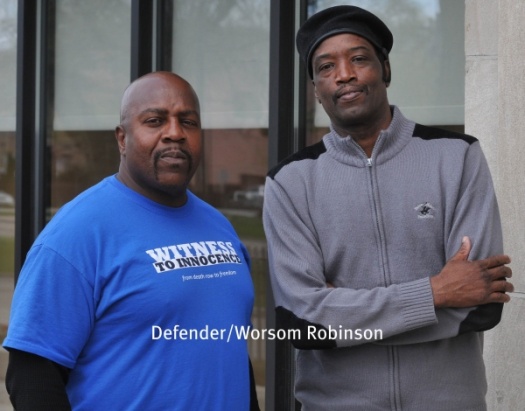
The “street file” on exonerated death row inmate Nathson Fields reveals he never should’ve been arrested for the murders of Talman Hickman and Jerome Smith. And, he wants a public apology for all involved, including former Mayor Richard
@font-face { font-family: “Times New Roman”; }@font-face { font-family: “Verdana”; }p.MsoNormal, li.MsoNormal, div.MsoNormal { margin: 0in 0in 0.0001pt; font-size: 12pt; font-family: “Times New Roman”; }table.MsoNormalTable { font-size: 10pt; font-family: “Times New Roman”; }div.Section1 { page: Section1; }
The “street file” on exonerated death row inmate Nathson Fields reveals he never should’ve been arrested for the murders of Talman Hickman and Jerome Smith. And, he wants a public apology for all involved, including former Mayor Richard M. Daley, who was Cook County State’s Attorney at the time.
Fields and his attorney Candace Gorman obtained the street file, decades after the initial request and after being repeatedly told the file didn’t exist. When asked by Gorman and Fields where the file had been all this time, no answer was given, he said.
“It contains exonerating evidence. I never would’ve ended up on Death Row. The Chicago Police Department deep-sixed the street file for the purposes of putting me on Death Row. They tried to murder me through the legal system,” Fields told the Defender.
He’s expected in court this week about the $360 million federal lawsuit he filed in 2010 for the time he spent incarcerated and the treatment he received.
For his nearly 18-year ordeal in the Illinois Department of Corrections – 11 1/2 on death row – the now-exonerated death row inmate blamed 38 defendants, including the City of Chicago, Mayor Richard M. Daley, the Chicago Police Department and the Cook County State’s Attorney’s office, among others, citing false arrest, and indictment and conviction in the April 1984 fatal shootings of rival street gang members Hickman and Smith near 39th Street and Evans Avenue.
His legal team at the time of the filing consisted of three other exonerated death row inmates: Rolando Cruz, Dickey Gaines and Darvey Tillis.
“When you’re behind bars, you have nothing but time to study the legal system. That’s what we all did. We prefer to do it ourselves than to run into lawyers who will have reservations about taking on everyone we listed as defendants,” said Fields.
Fields was convicted of the murders and was sentenced to death. He was to be executed in 1990, however was granted a new trial because the late Judge Thomas Maloney, who presided over his trial, was under federal investigation for taking bribes in murder trials.
On May 9, 2003 Fields was released on $100,000 bond and was acquitted in April 2009 after the retrial. He received his Certificate of Innocence in December 2009 and was compensated by the state for being wrongfully convicted.
“They fought hard to not give me the certificate or the money due to me,” he said.
Fields said there’s no doubt in his mind he was set up and the government and law enforcement agencies made sure he went down for a double murder he didn’t commit.
“I was framed and the lawsuit details that. I was arrested 13 months after the crime and was denied my due process of the law. They created their own rules when it came to me,” said Fields, who has started his own landscaping and construction business.
A self-admitted former member of the El Rukn street gang, Fields was arrested more than a year after the shootings occurred based on a description he said he didn’t fit. And the line-up he was placed in was staged to single him out, said the now-56-year-old.
An eyewitness said the shooters were two men with light complexions who appeared to be in their 20s. Fields was in his early 30s at the time of the incident and has a dark complexion, according to the suit.
“In the line-up, we all were supposed to have on similar clothing. I was the only one with short sleeves on. I believe it was designed so my gang tattoos could be seen,” he said after showing a photo of the line-up.
Fields’ time in Cook County Jail, Menard Correctional Center and Pontiac Correctional Center was rife with beatings by guards and other forms of torture such as being gassed, he said.
“When you go through things like that, especially when you know you’ve done nothing wrong, it can wear on a person. I’ve seen a few take their lives because they were on death row,” an emotional Fields said.
He witnessed fellow death row prisoners go “stir crazy” running around their cells naked and talking incoherently. One day his fellow inmates were there. The next day they were executed, he said.
“Their faces I would never forget. I’ll live with those images for the rest of my life,” he said.
Copyright 2012 Chicago Defender
